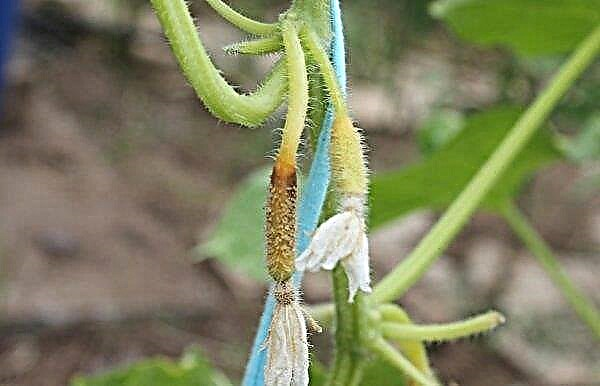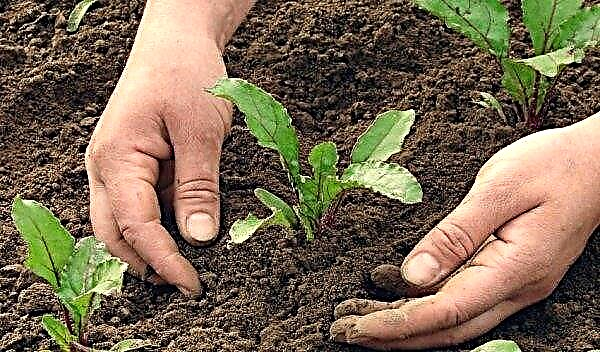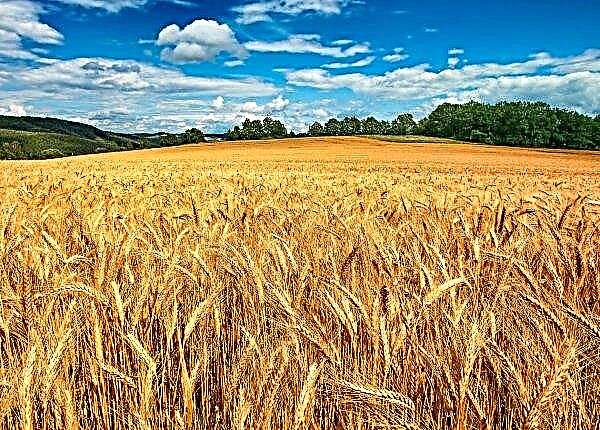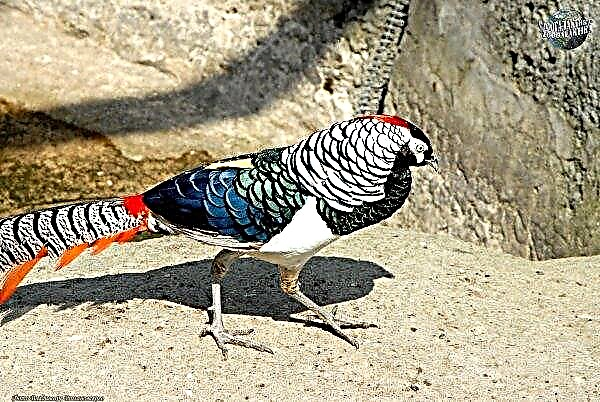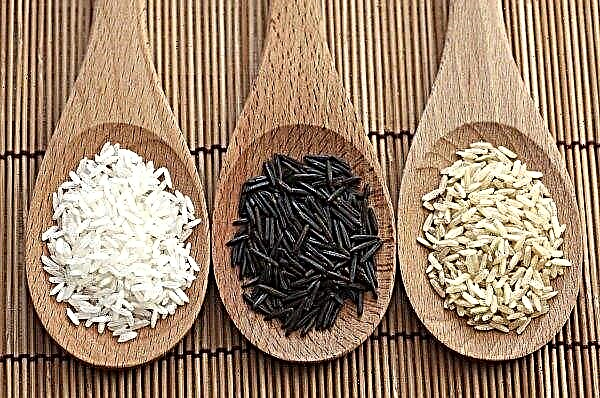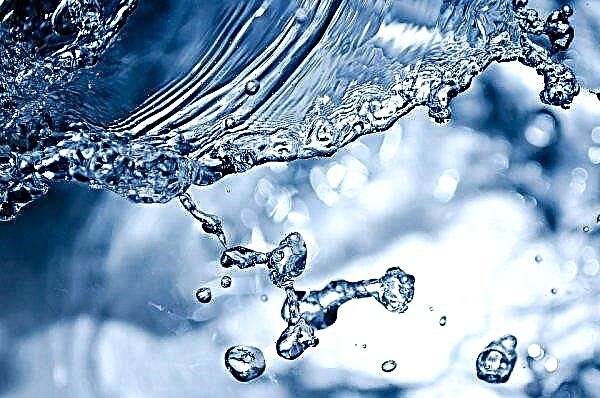If the cucumbers are poorly watered, the vegetable will have a bitter taste, which is unlikely to appeal to consumers. Therefore, when growing this crop, it is extremely important to monitor the humidity, especially if the plant grows in greenhouse conditions. This article will focus on the rules and features of watering cucumbers.
Suitable conditions for growing cucumbers
To get a good crop of cucumbers, you need to provide such conditions for the plant:
- The distance between the bushes is 55 cm, between the rows - 75 cm. With strongly thickened beds, the plants will intertwine and interfere with each other's growth. Due to the abundant greenery, the sun will not receive enough sunlight, so the roots will begin to bend and rot.
- The greenhouse is well ventilated, since excess moisture can cause plant decay. Fresh oxygen is needed to form greens.
- The soil is moist, but not wet.
- Humidity in the greenhouse is 65–80%.
- Regular top dressing.
- Optimum temperature conditions.
Did you know? For the first time in history, the ancient Roman emperor Tiberius ordered the construction of greenhouses for growing cucumbers. He liked this vegetable, and he wanted to feast on it daily.
How to water cucumbers in a greenhouse
Watering plantings in the greenhouse has its own characteristics, since the material of the structure forms a certain microclimate.
Fundamental rules
For irrigation to be beneficial, the process must be carried out correctly:
- the soil should be abundantly moistened, but not flooded;
- before watering, if the earth is solid, it is necessary to fluff it;
- make sure that the irrigation is uniform (if you missed the procedure, do not fill the plant);
- daily, in the evening, ventilate the greenhouse;
- monitor the humidity level in the greenhouse;
- after irrigation, carry out the hilling;
- water should be without salts, and not very hard (adding wood ash 55 g per 10 l will help to soften);
- watering is carried out in the morning or evening.
 If you grow cucumbers in polycarbonate greenhouses, you must adhere to the following rules:
If you grow cucumbers in polycarbonate greenhouses, you must adhere to the following rules:- regular watering with a constant amount of water;
- seedlings are watered under the root, an adult plant through grooves;
- irrigation is carried out with warm water;
- regular monitoring of the state of the plant.
Important! If cucumbers grow in open ground, they can survive a week without watering. In greenhouse conditions, after 3-4 days the plant will begin to wilt.
Water requirements
Cold water is dangerous for the plant, as it can cause various putrefactive processes. The optimum temperature of water for irrigation is 20 ° C. It can be heated, but it is extremely expensive. It is better to fill a large tank with water in the morning and let it settle. By evening watering, it will warm up in the sun to the desired temperature.
Watering Methods
The culture can be watered both manually and automatically. Each method has pros and cons.
Manual
The manual method is usually applicable if a couple of dozen bushes of culture grow in a greenhouse - this is its main plus. All the rest are disadvantages:
- a lot of time is wasted;
- it is necessary to keep a heavy watering can on weight or to make several walkers;
- if you extend the hose for irrigation, you definitely need a spray nozzle.
 Manually best watered from a watering can, as a hose stream can easily clog the plant and expose the roots.
Manually best watered from a watering can, as a hose stream can easily clog the plant and expose the roots.Automatic (drip)
Automatic drip irrigation is the most common way to moisten the soil. Thanks to such irrigation, moisture immediately falls under the root, leaving the topsoil dry. This reduces the risk of developing various diseases.
The easiest way to organize drip irrigation is with plastic bottles. To do this, they dig in near each bush with its neck down. The bottom is cut off. The tank is filled with water and due to the capillary effect, the beds will be irrigated.
This method is not very suitable for constant watering; it’s more profitable to use when you are away for a while. For permanent irrigation it is better to build a more complex system. Drop watering from a plastic bottle. For it, you need a drop tape or hose, where holes will be made and tubes removed for each bush. Water can be fed by gravity from a pump or main system.
Drop watering from a plastic bottle. For it, you need a drop tape or hose, where holes will be made and tubes removed for each bush. Water can be fed by gravity from a pump or main system.
- Advantages of such watering:
- the soil is not waterlogged;
- moisture does not stagnate;
- water is used sparingly;
- can control the process;
- significantly saved time and effort;
- less evaporation.
- Disadvantages:
- in clay soils, the system quickly clogs;
- Functional checks are required regularly.
- harder to heat water.
How often to water
Typically, cucumbers are irrigated once a day. The interval between watering will depend on what stage the plant is in (seedlings, blooms, ovaries form).
The optimal irrigation time is morning, before sunrise, or evening, after sunset. Many experienced gardeners give preference to evening watering, because during the night the plant best grows. In cloudy weather, you can water it during the day. The volume of fluid consumed is 5-10 liters per square meter. In spring you can reduce it to 2-3 liters, and in hot weather - pour to the maximum. When the air temperature is stable at 25 ° C and above, in addition to irrigation, irrigation must also be done - imitation of rain by spraying water from above.
The volume of fluid consumed is 5-10 liters per square meter. In spring you can reduce it to 2-3 liters, and in hot weather - pour to the maximum. When the air temperature is stable at 25 ° C and above, in addition to irrigation, irrigation must also be done - imitation of rain by spraying water from above.
Important! Do not wait in the daytime, when the sun is very hot and can quickly burn wet leaves, as water droplets act as magnifying lenses.
Features of watering
It has already been noted that the intensity of irrigation depends on the condition of the plant. The irrigation frequency is also affected by weather conditions.
During flowering
From the moment seedlings appear and until the formation of the first buds, the plant needs daily moisturizing. During the flowering period, the frequency of watering is reduced so that the plant does not spend energy on the growth of greenery. The interval is a day or two. Water needs to be consumed 9-12 liters per square. meter.
During fruiting
When the ovary begins to form, the frequency of watering is used as before (daily). Some gardeners prefer to water every other day, so that all the nutrients pass from the soil to the fruits. If leaf wilting is noted, irrigation is carried out daily.
In hot and rainy weather
In cucumbers, the root system is poorly developed, so the plant spends a lot of strength and moisture on the formation of a thick aerial part and juicy fruits. Because of this, in hot weather, the volume of liquid poured under the bush needs to be increased. It is advisable to spend 5-10 liters per square meter. meter beds every day. If you need to increase the humidity in the greenhouse, then you can irrigate the plants using a watering can, spending 4-5 liters per square meter. meter.
In rainy weather, the frequency of irrigation is reduced and the volume of water is reduced. In such a period, it is extremely important to control the humidity indicators in the greenhouse, avoiding a significant increase.
What problems may arise and how to solve them
Each gardener when growing cucumbers may encounter such problems:
- The fruit grows an ugly form. If the formed ovary resembles a pear, then the soil lacks potassium. It is necessary to feed the plant with water mixed with ash (10 l 500 g). When the shape resembles an inverted pear (thicker at the stem), then most likely there is not enough nitrogen. Need to make nitrogen fertilizers. When the fruit bends in an arc, then, apparently, too much water was poured under the bush after a long break. Need to irrigate regularly.
- The fruit is bitter. The reason for this may be drought or sudden changes in temperature. It is necessary to irrigate correctly, to huddle in time and to monitor the microclimate in the greenhouse.
- Foliage turned yellow during the fruiting season. Not enough nitrogen. It is necessary to feed with nitrogen fertilizers (for 3 l 2–3 tsp) pouring 200–300 ml under each bush.
- The leaves fade. Most likely - an excess of moisture or damaged roots. Check the root system. If damage, redness is noticeable, then the bush is attacked by root rot. It is necessary to sprinkle the roots with chalk or ash. They will dry the damaged areas and will not allow rot to spread further. If the roots are whole - most likely, the cause is a viral infection. Urgently need to remove diseased plants.
- Leaves are covered in small holes. The reason for this may be improper irrigation. If water fell on the foliage, then on a sunny day, the drops play the role of a lens, and the sheet burns. The appearance of drops can also be a consequence of condensation formed in the greenhouse due to the difference in night and day temperatures. Therefore, in the morning you need to carefully inspect the greenhouses from the inside and wipe the condensate.


Did you know? Everyone knows that young cucumbers are always covered with thorns. But few people know that these thorns - not just a feature of the peel of the fetus. They serve to remove excess moisture from the vegetable.
Cucumbers are very fond of moisture and need it, since their fruit is 95% water. Therefore, correct and timely watering is the key to obtaining a plentiful harvest and delicious fruits.


